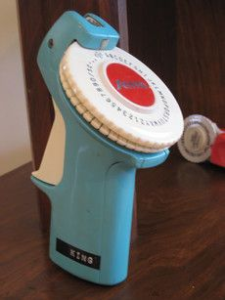Label makers have evolved remarkably over centuries, transforming from primitive hand-carved labels to advanced digital devices. These indispensable tools have revolutionized organization, manufacturing, and retail. Let’s take a journey through the rich history of label makers, exploring their origins, key innovations, and their impact on industries worldwide.

Label Makers in Ancient Times: The Birth of Organization
In ancient civilizations, the concept of labeling existed long before modern technology. People used primitive methods to mark ownership and identify items. The earliest label-making techniques involved carving or engraving symbols onto materials like wood, clay, or stone. While these labels were far from today’s sleek, customizable options, they served an essential purpose—organizing and identifying items.
These early labels were often attached to goods using strings or primitive adhesives. They were primarily used in trade, where identifying the ownership or contents of goods was crucial. This system, though labor-intensive and limited in design, laid the foundation for the modern labeling systems we use today.
The Rise of Industrial Label Makers: Revolutionizing Production
Fast forward to the Industrial Revolution, and the world of labeling experienced a dramatic shift. The mass production of goods required efficient methods for labeling products, tools, and containers. This gave rise to the first industrial label makers, which were rudimentary machines but significantly more efficient than manual labor.
These early machines were often hand-operated, using interchangeable metal or wooden types to stamp information onto labels. The impact was profound—manufacturers could now label large volumes of products quickly and accurately, reducing human error. This period marked the beginning of automated labeling systems, which streamlined production processes and set the stage for modern industry standards.
Innovations in Label Making Technology: The Digital Leap
As industries grew and technology advanced, so did label-making technology. One of the most significant breakthroughs was the advent of digital label printers. Unlike the manual, labor-intensive methods of the past, digital printers offered precision, speed, and customization.